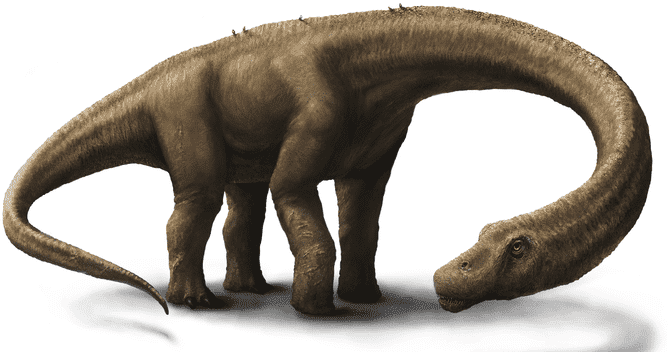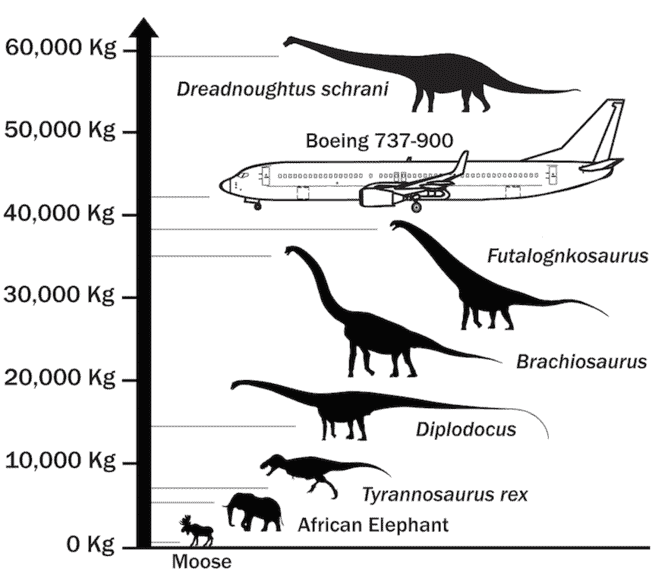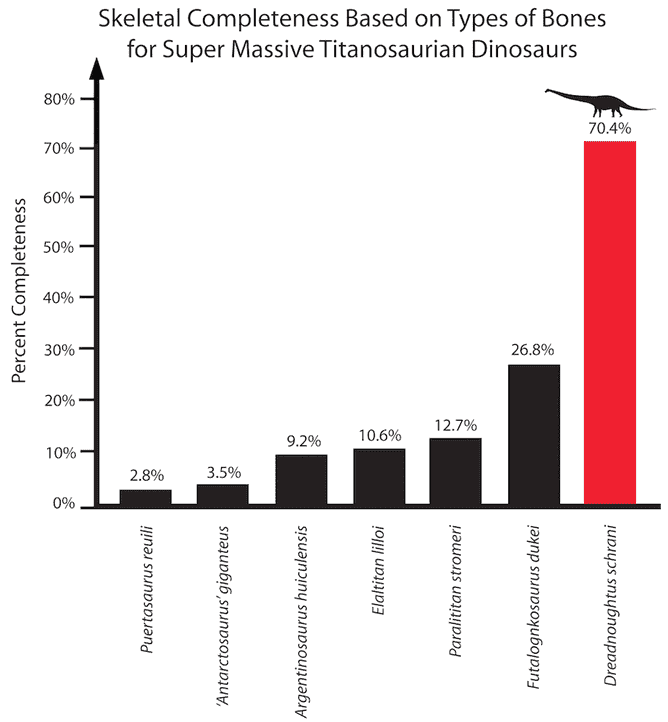
A newly found superdinosaur Dreadnoughtus schrani, is the largest known land animal for which mass can be accurately calculated, a recent study concluded. The giant speciment, which isn’t even fully grown, probably measured 85 feet long and weighed about 65 tons.
The name literally means “fear nothing”, and the dinosaur has already been nicknamed Dread. It is named after the British battleship HMS Dreadnought, one of the most important vessels in WWI.
The dinosaur is so huge, that even envisioning it requires a stretch of the immagination – they weighed more than a Boeing, or more than 7 T-Rex. It had no known predators, which shouldn’t come as a surprise; it literally outgrew predation.

“No doubt Dread would use its amazingly muscled tail to fend off attack,” Kenneth Lacovara, an associate professor in Drexel University’s College of Arts and Sciences, told us. “If an animal made it under its tail, three large claws would be waiting for them on each back foot.” He added, “I can’t imagine that it was a good idea to attack a full-grown, healthy Dreadnoughtus.”
However, being this big also had its downsides: Dreadnoughtus spent virtually all its day eating, and this was quite a challenge.
“Every day is about taking in enough calories to nourish this house-sized body,” he explained. “I imagine their day consists largely of standing in one place. You have this 37-foot-long neck balanced by a 30-foot-long tail in the back. Without moving your legs, you have access to a giant feeding envelope of trees and fern leaves.”
Its stomach alone was probably larger than a horse. But sheer size couldn’t save this specimen from its unfortunate fate – it was probably quickly buried by a flooding river. The dinosaurs’ rapid and deep burial, Lacovara said, accounts for the extraordinary level of fossil completeness.

This amount of fossil material found is unprecedented for a large long-necked dinosaur. Usually, this kind of dinosaur is only characterized based on a few bones. Now, paleontologists are trying to answer a deceptively complicated question – how did it move? Dreadnoughtus pushed everything we know about evolution to the limit.
Journal Reference: Kenneth J. Lacovara et al. A Gigantic, Exceptionally Complete Titanosaurian Sauropod Dinosaur from Southern Patagonia, Argentina. doi:10.1038/srep06196






